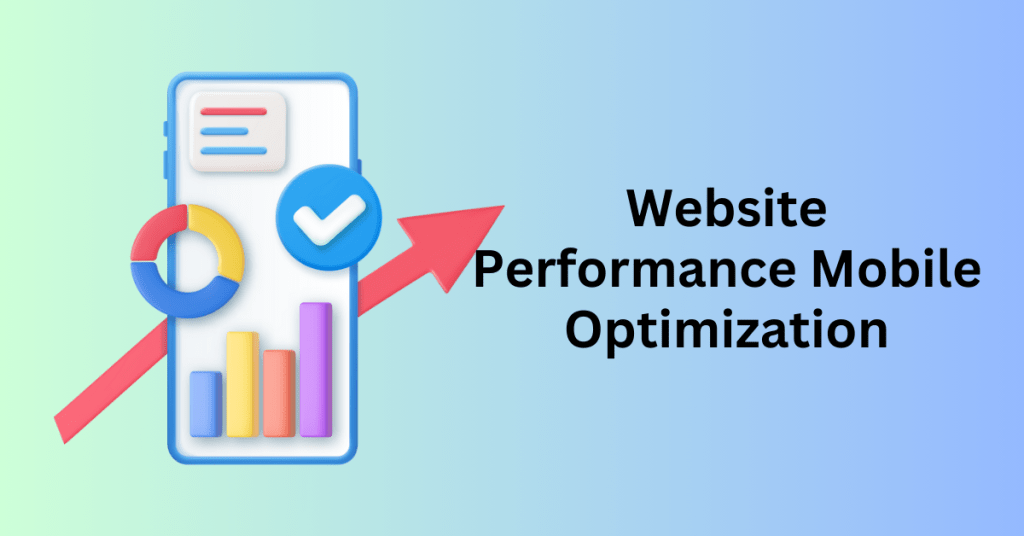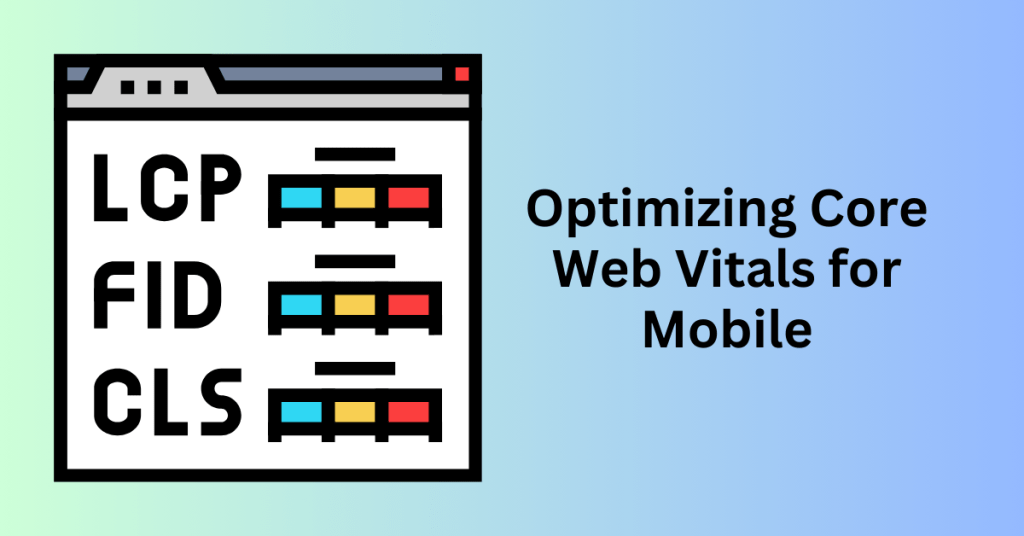In today’s digital landscape, mobile optimization isn’t just a luxury—it’s a necessity. It goes beyond shrinking images or ensuring text is readable on smaller screens; it’s about providing an effortless and enjoyable experience for your users. Fast load times, intuitive navigation, and smooth interactions are all key components that ensure visitors stay on your site and engage with your content.
For example, online stores face significant losses if their mobile checkouts are slow or cumbersome. Likewise, blogs or content-driven websites risk losing readers if their navigation is difficult to use on mobile devices. The reality is that mobile optimization directly impacts your ability to attract and retain customers.
With this in mind, in this guide, we’ll walk through practical and actionable ways to optimize your site for mobile in 2025. By doing so, you’ll not only improve user experience but also boost engagement and ensure your website stays competitive in a world increasingly dominated by mobile and portable devices.
What is Mobile Optimization
With over 62.7% of internet users accessing the web through mobile devices, optimizing your website for mobile isn’t just an option—it’s a necessity. Mobile optimization goes beyond simply making the content fit smaller screens; it involves a strategic approach that takes into account evolving user behaviour, emerging design trends, and advancements in mobile technology.

As mobile traffic continues to dominate online activity, businesses that prioritize mobile-friendly experiences will stay ahead of the competition. If your website isn’t optimized for mobile users, you risk losing potential customers to competitors who offer seamless, user-friendly experiences.
Why Mobile Optimization is Critical for Future Web Design
A website that isn’t easy to navigate on mobile can frustrate visitors, leading to higher bounce rates and lost conversions. Today’s consumers expect websites to be fast, responsive, and visually appealing—regardless of the device they’re using.
Key Benefits of Mobile Optimization:
- Improved User Experience: Responsive web design ensures that your website adapts to any screen size, providing a consistent and engaging experience across all devices. This seamless experience helps retain visitors and keeps them coming back.
- Higher Engagement & Conversions: A smooth mobile experience encourages visitors to stay longer, interact with your content, and complete desired actions, whether it’s making a purchase or signing up for a newsletter. The easier it is to navigate, the more likely users are to convert.
- SEO & Search Ranking Boost: Google prioritizes mobile-friendly websites in search results, meaning a well-optimized site improves your chances of ranking higher. This leads to more organic traffic and greater visibility.
- Cost-Effective Solution: With a responsive design, you eliminate the need to maintain separate desktop and mobile versions of your site. This not only saves time but also reduces costs by streamlining your site’s management, offering one efficient design for all users.
Evolving User Expectations: How Mobile Browsing is Changing
Mobile browsing has evolved beyond simple content consumption. Today’s users expect speed, efficiency, and interactivity. They don’t just want to read—they want to shop, communicate, and complete tasks instantly.
What Users Expect from a Mobile-Optimized Website in 2025:
🚀 Lightning-Fast Load Times: Slow-loading sites drive users away. Google recommends a load time of under three seconds for mobile pages.
🎯 Seamless Navigation: Menus, buttons, and forms should be easy to use on a touchscreen without excessive scrolling or zooming.
🛒 Effortless Transactions: Whether purchasing a product or filling out a form, users expect a hassle-free process with secure and efficient payment options.
🎨 Visually Appealing & Interactive Design: Modern mobile design includes clean layouts, engaging visuals, and intuitive interfaces that enhance user engagement.
To ensure your website is mobile-friendly and future-proof, implement these mobile optimization strategies:
Get Reliable and Mobile Optimized Hosting Today
1. Why Mobile-First Indexing Matters for Your Website’s SEO
Google has shifted to mobile-first indexing, meaning it prioritizes the mobile version of your website when determining search rankings. If your site isn’t optimized for mobile users, you could see a decline in rankings, traffic, and overall business growth.
A poorly optimized mobile site—whether due to missing content, slow load times, or difficult navigation—can significantly impact your search performance. To stay competitive and ensure a seamless user experience, adopting a mobile-first design strategy is essential.
Best Practices for Mobile-First Web Design
Creating a website with mobile-first indexing in mind requires a user-friendly and responsive approach. Here are key strategies to enhance your site’s performance and SEO:
Responsive Design for All Devices
Your site should automatically adjust to different screen sizes. Use a flexible grid layout that ensures a smooth experience whether users are browsing on a smartphone, tablet, or desktop.
Fast Page Load Speeds
Slow-loading pages frustrate users and lead to higher bounce rates. Optimize images, minimize code, and leverage browser caching to improve speed. Google recommends keeping load times under three seconds for a better user experience.
Touch-Friendly Navigation
Buttons and links should be easy to tap, with touch targets of at least 44×44 pixels. Avoid placing links too close together to prevent accidental clicks.
Readable and Scannable Content
Use clear fonts, legible text sizes, and ample white space to enhance readability. Short paragraphs and bullet points help users digest information quickly.
Simplified and Clutter-Free Design
Prioritize essential content and remove unnecessary elements that can slow down or clutter the page. Focus on what users need most and structure your site with clear headings.
Regular Testing Across Devices
Test your website on multiple mobile devices and browsers to identify and fix any layout, speed, or functionality issues. Google’s Mobile-Friendly Test is a great tool to check how well your site performs on smaller screens.
A well-optimized mobile website enhances user experience, keeps visitors engaged, and ultimately increases conversions. When users can easily navigate and interact with your site, they are more likely to stay longer, return, and take desired actions—whether that’s making a purchase, signing up for a newsletter, or booking a service.
2. Website Performance Mobile Optimization
Website performance optimization is critical for both user experience and search engine rankings. A slow-loading site frustrates visitors, increases bounce rates, and can negatively impact your SEO. Google prioritizes fast-loading websites, especially for mobile users, making performance optimization essential for online success.

By implementing key optimization techniques, you can reduce page load times, enhance user engagement, and improve conversion rates.
Strategies for Website Mobile Optimization
A fast-loading website ensures that visitors can quickly access your content without delays. Here are some essential strategies to boost mobile performance:
1. Minimize HTTP Requests
Each file request, including CSS, JavaScript, and images, contributes to your page load time. To improve performance, it is essential to reduce unnecessary HTTP requests.
One effective approach is to combine CSS and JavaScript files, minimizing the number of requests made to the server. Additionally, removing unused scripts and plugins can help eliminate elements that slow down your website, ensuring a faster and more efficient user experience.
2. Enable Compression
Reduce file sizes using compression techniques like Gzip or Brotli, which make your HTML, CSS, and JavaScript files smaller and faster to load.
3. Optimize Images for Mobile
Large images can significantly slow down your website, affecting both performance and user experience. To improve image performance, consider using modern formats like WebP or AVIF, which offer high-quality visuals with smaller file sizes.
Additionally, implementing responsive images ensures that the appropriate image size is served based on a user’s device, reducing unnecessary loading time and enhancing overall efficiency.
4. Implement Lazy Loading
With lazy loading, images and videos only load when they come into view. This reduces initial load time and improves performance, especially on content-heavy pages.
5. Use a Content Delivery Network (CDN)
A CDN distributes your website’s content across multiple servers worldwide, ensuring users receive data from the closest location. This minimizes delays and speeds up loading times. Hosting providers like Bluehost offer free Cloudflare CDN integration to enhance website performance.
6. Optimize Fonts and Scripts
Web fonts and third-party scripts can significantly impact loading times, making your site slower and less responsive. To improve efficiency, consider preloading key fonts to ensure faster rendering and a smoother user experience. This allows critical content to load quickly, reducing delays and enhancing user satisfaction.
Additionally, limit the use of third-party tracking codes and scripts that add unnecessary weight to your site. By streamlining these elements, you can optimize performance and reduce load times, ensuring that your website runs efficiently.
A slow website can drive visitors away before they even get the chance to view your content. Google also considers page speed as a ranking factor, so a sluggish site can hurt your position in search results. By optimizing your website’s performance, you create a seamless experience for users, boost engagement, and improve conversions.
3. Mobile-Friendly Content
With more users browsing on smartphones than ever before, mobile-friendly content is essential for keeping visitors engaged and improving search rankings. Content that is easy to read, visually appealing, and quick to load enhances the user experience and aligns with Google’s mobile-first indexing.
Creating content for mobile isn’t just about making it smaller—it’s about making it more effective. Here’s how to optimize your written and visual content for mobile users.
Writing Mobile Optimization Content for Mobile Readers
Users on mobile devices tend to scroll quickly, multitask, and have short attention spans. To keep them engaged, your content must be clear, concise, and easy to read.
For mobile-friendly writing, follow these best practices:
- Be direct and concise – Use short sentences, break up long paragraphs, and eliminate unnecessary words to improve readability.
- Make content scannable – Utilize headings, bullet points, bold text, and highlights to help users quickly find key information.
- Enhance call-to-actions (CTAs) – Implement clear, clickable buttons that encourage users to take action effortlessly.
- Prioritize fast-loading content – Avoid excessive text and unnecessary elements that can slow down page performance.
By following these strategies, you can create content that captures and retains mobile users’ attention effectively.
Visual Content for Mobile Optimization
Images and graphics enhance your content, making it more engaging and visually appealing. However, unoptimized visuals can slow down your site and frustrate users. To maintain high-quality, fast-loading visuals, consider implementing these strategies.
First, use modern image formats such as WebP or AVIF, which provide superior quality at smaller file sizes. These formats help reduce loading times without compromising visual clarity. Additionally, implement responsive images that automatically adjust based on a user’s screen size. This ensures optimal display across different devices and improves the overall user experience.
Another effective strategy is enabling lazy loading, which allows images and videos to load only when they appear on the user’s screen. This reduces initial load times and enhances site performance. Compressing image files is equally important—tools like TinyPNG and HandBrake can minimize file sizes without sacrificing quality, keeping your site fast and efficient.
Optimizing alt text is another crucial step. Including descriptive alt text improves SEO and accessibility, making your content more discoverable and inclusive. Lastly, limit heavy animations, as complex animations can slow down your site and disrupt user experience. Keep animations minimal and lightweight to maintain smooth performance while still adding visual interest.
Mobile Video Optimization for Better Performance
Video content is highly engaging on mobile devices; however, if not optimized properly, it can lead to slow load times and high bounce rates. Therefore, to ensure a smooth viewing experience, it’s essential to make your videos mobile-friendly.
To start, choose fast-loading video formats such as MP4 or WebM, and compress the files to improve load speed without compromising quality. Additionally, enabling Adaptive Bitrate Streaming (ABR) is crucial, as it automatically adjusts video quality based on the user’s internet speed. This ensures smooth playback and prevents buffering issues.
Furthermore, using media queries for responsive videos is another important step. Media queries allow video players to resize automatically based on screen size, providing a better viewing experience across different devices. While auto-play can also boost engagement, always remember to include sound controls so users can mute or unmute the video as needed.
Equally important is testing your videos on multiple devices to ensure compatibility across different browsers and screen sizes. This helps prevent playback issues and guarantees a consistent experience for all users. In addition, optimizing video titles and descriptions with SEO-friendly keywords increases discoverability in search results, driving more traffic to your content.
In conclusion, mobile-optimized content not only enhances the user experience but also keeps visitors on your site longer, thereby improving search engine rankings. With Google prioritizing mobile-first indexing, businesses that fail to adapt risk losing visibility and traffic. By writing for mobile users, optimizing visuals, and enhancing video performance, you create a seamless experience that keeps visitors engaged—and more likely to convert.
4. Optimizing Core Web Vitals for Mobile
Core Web Vitals are crucial metrics that evaluate the user experience on your website, focusing on page load speed, interactivity, and visual stability. With Google incorporating these factors into its ranking system, optimizing Core Web Vitals has become essential for improving SEO and providing a seamless experience for visitors—especially on mobile devices. This guide will walk you through the importance of Core Web Vitals, how they impact your website’s performance, and the best strategies to optimize your site for mobile use.

Core Web Vitals are three key performance indicators that Google uses to assess user experience and, consequently, site ranking. They measure how fast and stable your website is, as well as how quickly users can interact with it.
- Largest Contentful Paint (LCP): This metric evaluates how quickly the main content of your page loads. For a good user experience, aim to keep LCP under 2.5 seconds.
- First Input Delay (FID): FID measures how quickly your site responds to user interactions, like clicks or taps. A delay longer than 100 milliseconds can create frustration for visitors, so it’s essential to keep this metric low.
- Cumulative Layout Shift (CLS): CLS gauges visual stability, tracking any unexpected shifts in page content while it loads. Ideally, your CLS score should stay below 0.1 to ensure a smooth browsing experience.
Google uses Core Web Vitals as a ranking factor, meaning websites that perform well in these areas are more likely to rank higher in search results. This not only improves visibility but also signals to users that your site is fast, responsive, and stable. Optimizing for Core Web Vitals is a win-win for both SEO and user experience. When you focus on mobile performance, you’re also improving overall site usability, leading to better retention rates and increased engagement.
How to Improve Core Web Vitals for Mobile Optimization
Given the growing importance of mobile-first browsing, optimizing Core Web Vitals for mobile users is critical. Here are some practical steps to enhance your site’s performance across these three metrics:
1. Improve Largest Contentful Paint (LCP)
LCP measures how quickly the largest element (usually an image or video) on your page loads. A fast LCP improves the overall user experience, especially on mobile devices where loading times are often slower due to connectivity.
- Use WebP Images: WebP images are compressed, providing smaller file sizes without compromising quality. This leads to faster load times.
- Implement Lazy Loading: Delay loading images or other content that users don’t immediately need. This helps improve load times for critical content.
- Leverage a Content Delivery Network (CDN): A CDN stores your website’s content on servers located closer to users, reducing server response times and speeding up page loading.
2. Reduce First Input Delay (FID)
FID tracks the time it takes for your website to respond to the first interaction (e.g., a user clicking a button). To enhance FID, aim for quick and smooth responses to user actions.
- Optimize JavaScript: Minimize JavaScript files and prioritize important scripts to reduce the time spent processing them.
- Limit Third-Party Scripts: Third-party services such as ads or social media plugins can slow down interactivity. Reduce or defer the loading of these scripts where possible.
- Prioritize Critical Resources: Focus on loading essential resources (like CSS or JavaScript) first to ensure a quick response to user actions.
3. Enhance Cumulative Layout Shift (CLS)
CLS tracks unexpected shifts in your page layout during the loading process. When images, videos, or ads load after the content, it causes layout shifts that can confuse users and lead to a poor experience.
- Set Fixed Sizes for Images and Ads: By defining the width and height of images and ads beforehand, you can avoid layout shifts as these elements load.
- Ensure Dynamic Elements Have Set Sizes: Ensure elements like buttons or banners are properly sized before they load to prevent any surprises.
- Use font-display: swap: This CSS property helps prevent invisible text while fonts are loading, improving stability and readability.
With more users accessing websites from mobile devices than ever before, it’s essential to prioritize mobile optimization. Websites that load quickly and provide a stable experience on mobile devices tend to have lower bounce rates and higher engagement, which positively impacts your SEO rankings.
By focusing on improving Core Web Vitals, especially for mobile, your site will be faster, more responsive, and offer a better overall user experience. This, in turn, can lead to improved rankings on Google, increased site traffic, and higher conversion rates.
5. Enhancing Mobile User Experience (UX)
As more users browse the web on mobile devices, delivering a smooth and engaging mobile experience is essential for retaining visitors and boosting your site’s performance. Optimizing your website’s mobile user experience (UX) involves several important factors, ranging from responsive design to simplified navigation and interactive elements. In this guide, we will explore practical tips to help you create an exceptional mobile experience for your users, all while improving engagement and SEO.
Given that mobile traffic has now surpassed desktop usage, ensuring your site offers a great mobile experience is more critical than ever. A site that’s optimized for mobile not only provides users with easy access to your content but also encourages them to stay longer and increases the likelihood of conversion. Moreover, Google considers mobile-friendliness as a ranking factor, meaning that optimizing for mobile can directly impact your site’s visibility in search results.
Prioritize Responsive Design
Responsive design ensures that your website adapts to different screen sizes and resolutions, creating a smooth experience no matter the device. A responsive website automatically adjusts to fit the screen, whether it’s a smartphone, tablet, or desktop, making your content easily accessible and readable.
- Choose Mobile-Friendly Layouts: Select layouts that work well on small screens, prioritizing readability and ease of navigation.
- Optimize Visual Content: Ensure images, videos, and other multimedia elements resize accordingly to prevent slow load times or poor viewing experiences on mobile devices.
- Test Across Devices: Regularly test your site on various devices to ensure a seamless experience across smartphones, tablets, and desktops.
Optimize for Speed
Page speed is one of the most important factors in mobile UX. Slow-loading websites frustrate users and lead to higher bounce rates. Optimizing load times not only enhances user experience but also plays a significant role in SEO rankings.
- Minimize File Sizes: Compress images, videos, and other media files to reduce their size without sacrificing quality.
- Leverage Caching: Use caching strategies to ensure your content loads faster on repeat visits.
- Prioritize Content: Load essential content first, and defer less critical elements, such as images or scripts, to ensure faster initial page loads.
Make Your Site Mobile-Friendly
Your website should look and function well across a variety of mobile devices, making mobile-friendly layouts and features essential.
- Use Media Queries: Apply CSS media queries to adapt the layout, fonts, and images according to different screen sizes.
- Focus on Touchscreen Compatibility: Ensure buttons and interactive elements are large enough to be easily tapped on smaller screens, and avoid elements that may be difficult to interact with via touch.
Utilize Core Web Vitals to Enhance UX and SEO
Core Web Vitals are key performance metrics that Google uses to measure and rank user experience. These include:
- Largest Contentful Paint (LCP): Focus on improving load times by optimizing media and using faster server responses.
- First Input Delay (FID): Reduce delay in interactivity by streamlining JavaScript and minimizing third-party scripts.
- Cumulative Layout Shift (CLS): Ensure that page elements don’t shift unexpectedly during load, maintaining a stable and predictable layout.
Optimizing for these Core Web Vitals improves both your UX and SEO, ensuring faster, more responsive pages that rank well in search results.
Simplify Navigation for Small Screens
Mobile devices have limited space, which makes clear, straightforward navigation crucial for user satisfaction. Here are some tips to simplify navigation on smaller screens:
- Hamburger Menus: Use a hamburger menu to hide navigation options behind a simple icon, saving valuable screen real estate while maintaining access to all pages.
- Logical Menu Organization: Ensure your navigation menu is organized logically, with important pages at the forefront, allowing users to quickly find what they’re looking for.
- Streamlined Navigation Paths: Design simple navigation paths that allow users to reach key sections of the site with as few taps as possible, improving ease of use and reducing frustration.
Leverage Interactive Design Trends
Interactive design elements can make your mobile site more engaging and enjoyable to use. When used correctly, these features can create a dynamic and personalized experience without overwhelming users.
- Microinteractions: Incorporate small animations or feedback features, such as button color changes or subtle transitions, to offer users instant feedback as they interact with your site.
- Gesture-Based Navigation: Integrate intuitive gestures like swipe, pinch, and zoom, which make navigation feel more natural and enhance the overall interactivity of your site.
- Balanced Interactive Elements: While interactive elements can be fun and engaging, ensure they don’t distract from the primary message or overwhelm the user with too many choices.
Aim for a Balanced, User-Centered Design
Effective mobile UX is all about balance. It’s important to create a design that is both visually appealing and easy to navigate, while also offering practical functionality. A clean, user-centred design reduces confusion, encourages action, and enhances the user experience, leading to better engagement rates and higher conversions.
- Focus on Clarity: Keep your layout simple, with clear, concise content and minimal clutter. This ensures users can quickly find what they’re looking for without being distracted by unnecessary elements.
- Prioritize Readability: Use legible fonts, appropriate contrast, and sufficient spacing to ensure your content is easy to read on small screens.
6. Technical Aspects of Mobile Website Optimization
To achieve optimal mobile performance, focusing on technical aspects is crucial. A mobile-optimized website ensures fast loading times, improved user engagement, and higher SEO rankings. From ensuring cross-browser compatibility to utilizing advanced responsive design techniques, every detail matters. In this guide, we will explore the technical foundations of mobile website optimization and how they contribute to a seamless experience for users.
For a mobile-optimized website to perform well, it’s essential to test it across various browsers and devices. Not all browsers interpret code in the same way, so cross-browser compatibility ensures your site looks and functions well for all users.
- Browser Testing: Regularly test your website on major browsers (Chrome, Firefox, Safari, Edge) and different operating systems (Android, iOS, Windows) to ensure consistency.
- Fix Compatibility Issues: Identify and resolve issues like layout shifts, broken features, or missing elements that may appear on certain browsers or devices.
Implementing Caching Mechanisms
Caching plays a pivotal role in improving the speed and performance of a mobile site. By storing certain parts of your website locally, caching reduces the time it takes to load content during repeat visits.
- Browser Caching: Leverage browser caching to store assets (images, JavaScript, CSS) on users’ devices, reducing load times for returning visitors.
- Content Delivery Networks (CDNs): CDNs help speed up content delivery by storing copies of your site’s content on multiple servers located closer to users, ensuring faster access no matter where they’re browsing from.
Utilizing Modern Web Technologies
As web technologies evolve, staying updated with new coding practices can ensure that your mobile site remains fast, scalable, and adaptable to future needs.
- Responsive Web Design: Utilize modern HTML, CSS, and JavaScript practices to ensure that your site adjusts seamlessly to different screen sizes and devices.
- Optimized Loading Techniques: Implement lazy loading for images and videos, allowing these elements to load only when they’re in the user’s viewport, improving speed.
Leveraging Advanced Responsive Design Techniques
Responsive design is the foundation of mobile optimization. By using smart techniques, you can ensure that your website adapts to various devices without the need for separate mobile sites.
- Fluid Grids and Flexible Layouts: Use CSS Grid and Flexbox to create dynamic, adaptable layouts that adjust to the size of the device. These layout systems enable flexible, mobile-friendly designs without complex workarounds.
- Advanced Media Queries: Tailor the appearance of your website based on device characteristics using advanced media queries. Set breakpoints that adjust for different screen widths, resolutions, and orientations. With Level 4 media query features like aspect-ratio, you can further enhance responsiveness.
- Responsive Typography: Use the clamp() function for fluid text sizes that adjust based on the viewport, ensuring text is legible on both small and large screens. Viewport units (vw, vh) can also help scale fonts proportionally.
- Container Queries: Use container queries to apply styles based on the size of the container rather than the viewport. This enables modular design and improves scalability across various screen sizes.
- Dynamic Image Sizing: Use the srcset and picture elements to serve images in varying sizes and resolutions depending on the user’s device, ensuring high-quality visuals without slowing down load times.
Advanced CSS Features
Advanced CSS techniques can significantly enhance your mobile site’s visual appeal and functionality, providing more flexibility in design.
- CSS Variables: CSS Variables allow for consistent theming across your site, making it easier to adjust colors, fonts, and layout properties without having to update every individual CSS rule.
- Logical Properties: Use logical properties like margin-inline and padding-block instead of physical ones (margin-left, padding-top). This ensures your site is more adaptable to different writing modes, such as right-to-left languages.
The Importance of Accelerated Mobile Pages (AMP)
Accelerated Mobile Pages (AMP) is a web tool specifically designed to improve mobile performance by simplifying HTML and enhancing page load times.
- Faster Load Times: AMP significantly speeds up load times by stripping down unnecessary code and using a streamlined version of HTML. Faster loading reduces user wait time and boosts engagement.
- SEO Benefits: Google favors AMP pages, which often rank higher in search results due to their speed and mobile-friendliness. AMP content is also prioritized in mobile search results, making it a valuable tool for improving visibility.
- Increased Engagement: Because AMP pages load quickly, users are more likely to stay on your site, reducing bounce rates and increasing the likelihood of conversions.
By utilizing AMP, businesses can provide a smooth, fast-loading mobile experience, increasing visibility and improving engagement. AMP is especially valuable in today’s fast-paced digital environment, where users expect instant access to content.
7. Security and Mobile Website Optimization
As mobile websites continue to dominate online browsing, ensuring that your site is secure is a crucial part of optimizing for mobile devices. Security not only protects sensitive user data but also helps build trust with visitors. Here’s how you can improve security while optimizing your website for mobile:
SSL Certificates: Safeguarding User Data
SSL (Secure Sockets Layer) certificates are essential for securing communication between the user’s browser and your server. When you implement SSL, your website transitions from HTTP to HTTPS, providing encryption that prevents data breaches and theft. This ensures that sensitive information, such as personal data and credit card details, is safely transmitted.
- Why SSL Matters for Mobile Optimization: Mobile users are particularly concerned about their data security. An SSL certificate instills trust, as users can clearly see the secure connection in their browser’s address bar. This is especially important for mobile transactions where users are more likely to make quick decisions.
Regular Updates: Keeping Your Site Secure
To keep cyber threats at bay, it’s essential to regularly update your website’s software, themes, and plugins. These updates often include security patches that address vulnerabilities and keep your site safe from hackers.
- Mobile Security Updates: Updates are particularly important for mobile optimization as the threat landscape is continually evolving. Mobile users are more likely to visit your website through apps or mobile browsers, making it essential to keep all aspects of your website, including security features, up to date.
Two-Factor Authentication (2FA): Enhancing Login Security
Adding an extra layer of protection with two-factor authentication (2FA) can significantly reduce the likelihood of unauthorized access. By requiring both a password and a unique verification code, you make it much harder for intruders to gain access.
- Protecting Mobile Logins: Many users access websites via mobile devices, making them more vulnerable to security threats. 2FA provides peace of mind by ensuring that only legitimate users can access sensitive areas of your site.
Building Trust and Protecting Your Brand’s Reputation
Implementing strong security measures not only keeps user data safe but also fosters trust with your audience. A secure site protects your brand image by preventing data breaches and enhancing user confidence. As more people shop and engage online through mobile devices, trust becomes a crucial factor in converting visitors into loyal customers.
Why Bluehost is Ideal for Mobile Optimization
When it comes to hosting your mobile-friendly website, Bluehost stands out as an excellent choice for a secure, reliable, and optimized experience. Here’s why Bluehost is particularly suited for mobile optimization:
- Fast and Secure Hosting: Bluehost provides quick, reliable hosting with built-in security features such as SSL certificates and CDN (Content Delivery Network) integration. These features help ensure that your site performs well on mobile devices and keeps your users’ data secure.
- Mobile-Optimized Themes: Bluehost offers responsive themes that automatically adjust to various screen sizes, ensuring a smooth mobile browsing experience without extra configuration.
- Optimized for Mobile Use: With a focus on providing fast load times and seamless navigation, Bluehost ensures that your mobile visitors enjoy the best performance possible.
Optimizing for Voice Search and Local SEO
Voice search is on the rise, with users increasingly searching via voice assistants like Google Assistant, Siri, and Alexa. To ensure your content is easily discoverable, it’s important to tailor your site for voice search and local SEO.
1. Voice Search Optimization: Speak the Language of Users
When it comes to voice search, it’s crucial to understand how people phrase their queries. Unlike typed searches, voice searches tend to be more conversational. To optimize for voice search:
- Use Conversational Keywords: Focus on longer phrases that match natural speech patterns. Think about how users might ask questions out loud, such as “Where can I buy shoes near me?” rather than “buy shoes.”
- Target Featured Snippets: Aim to answer common questions clearly and concisely in your content. Appearing as a featured snippet increases the chances of your content being read aloud by voice assistants.
2. Local SEO: Make Your Business Stand Out in Local Searches
Local SEO plays a pivotal role in helping you connect with nearby customers who are searching for products or services in your area. To optimize for local search:
- Google Business Profile (GBP): Ensure your Google Business Profile is fully optimized with accurate business information, such as hours, location, and contact details. This makes it easier for local customers to find you.
- Location-Based Keywords: Incorporate phrases like “near me” or your city name in your content and meta tags to target local searches effectively.
By focusing on voice search and local SEO, you can significantly improve your website’s visibility and connect with your target audience on a more personal level.
Utilize Google’s Mobile Optimization Tools
Testing and optimizing your website for mobile is essential to ensuring that your site provides an excellent user experience across all devices. Google offers a range of tools to help you identify issues and improve your mobile site’s performance:
| Tool | Description |
| Google PageSpeed Insights | Analyze your site’s speed and get suggestions for improvement. |
| GTmetrix | Provides detailed reports on your site’s speed and actionable recommendations for optimization. |
| WebPageTest | Test your website’s performance from various locations and simulate different network conditions and browsers. |
| Google Search Console | Identify mobile usability issues and track your website’s performance in mobile search results. |
| Google AMP | Accelerated Mobile Pages (AMP) speeds up page load times, providing a better mobile user experience. |
| Google Analytics | Analyze mobile traffic and user behavior to identify areas for improvement. |
| Mobile-Friendly Test | Check whether your website is mobile-friendly and receive suggestions for enhancements. |
By leveraging these tools, you can gain valuable insights into how your website performs on mobile devices and pinpoint areas for improvement.
Future Trends in Mobile Optimization
The world of mobile optimization is constantly changing. With more people using mobile devices, it’s important to stay updated on the latest mobile optimization trends. This helps create a great user experience and maintain good SEO rankings. Here are some key trends for the future:
- Voice search optimization: More people are using voice assistants now. It is important to make websites easy for natural speech and questions.
- AI-powered personalization: AI will help to create content just for you. It will give better product suggestions and improve chats with chatbots and virtual assistants.
- Progressive web apps (PWAs): PWAs feel like apps on mobile browsers. They load fast, work offline and can send push notifications.
- 5G integration: 5G networks make load times quicker. They also support better media with high-quality videos, AR/VR and fun interactive features.
- Augmented reality (AR): AR makes experiences more enjoyable. It allows users to try on products online and see interactive displays.
- Mobile-first design: Focus on easy navigation that feels good for thumbs. Use simple layouts and quick actions to create a great mobile experience.
Following these trends can help businesses adapt to the changing mobile world.
Final Thoughts: Essential Mobile Optimization Strategies for Online Success
As we move forward, ensuring that your website is optimized for mobile devices is no longer just an option—it’s now a critical factor for success. In fact, with mobile browsing accounting for the majority of online traffic, businesses that prioritize seamless mobile experiences are presented with a unique opportunity to capture a significant share of the market.
Moreover, by implementing the mobile SEO best practices discussed in this blog—such as improving page speed, ensuring responsive design, leveraging structured data, and optimizing for voice search and local SEO—you’ll not only enhance user satisfaction but also improve your site’s visibility and search engine rankings. In a world where nearly everyone uses mobile devices, staying ahead of these trends is essential to keeping your business competitive in the fast-evolving digital landscape.
So, are you ready to give your website the mobile optimization boost it needs? If so, get started with Bluehost’s performance-driven hosting solutions today and position your site for mobile success!


